The fine highway South towards Cartegena was practically empty and the driving easy – fortunately because we were getting a lot of Spanish practice from the car’s GPS system. We got pretty good at directions in Spanish. Once I worked out how to change it to a cool British voice, MLH visibly relaxed and named her ‘Clare’. He said it’s a calming name.
Cartenega is basically a huge archeological site. It was a major Roman port at the height of the Empire, but the wonderful Roman theatre, amphitheatre, forum and baths were only uncovered in the last 30 years or so, and archeological digs are ongoing. Successive occupiers simply built on top of existing settlements. Almost every street in the small city has excavations revealing the remains of a middle-class villa, or a Roman road. It’s still a port, has a shipyard, and the Spanish navy has an officers’ training college here. Walking on the promenade in the evening to enjoy a beautiful sunset, a huge battle-ship grey yacht under construction at the shipyard stood out from the other luxury yachts. A local fisherman told us it was ordered by a Russian magnate, who was getting two the same. We deduced they are not pleasure boats.
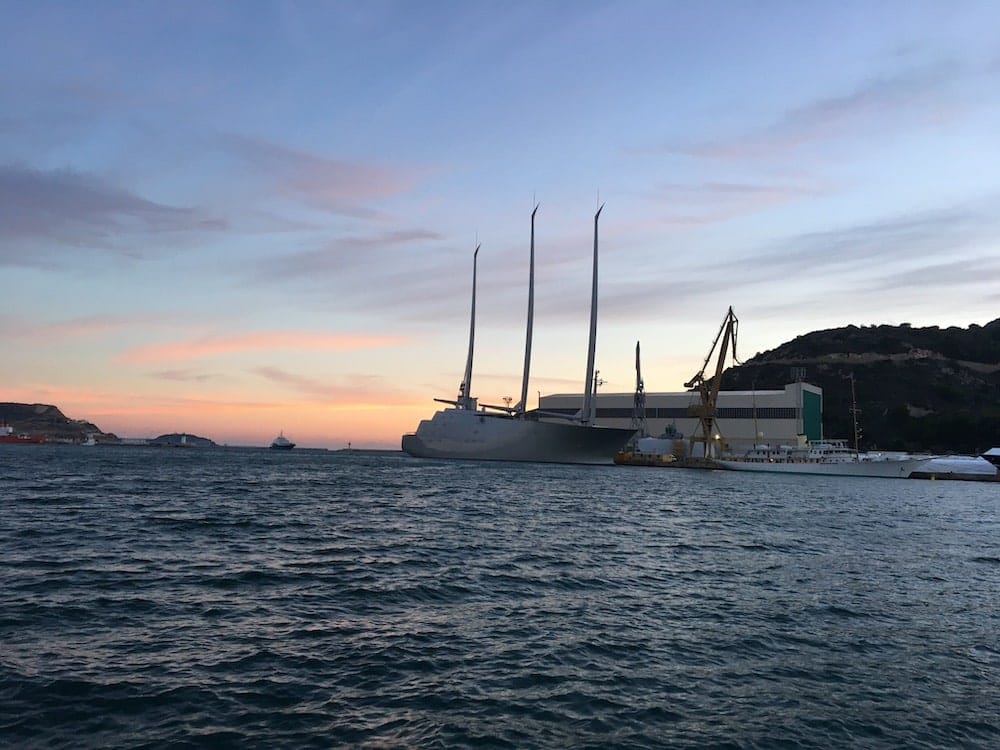
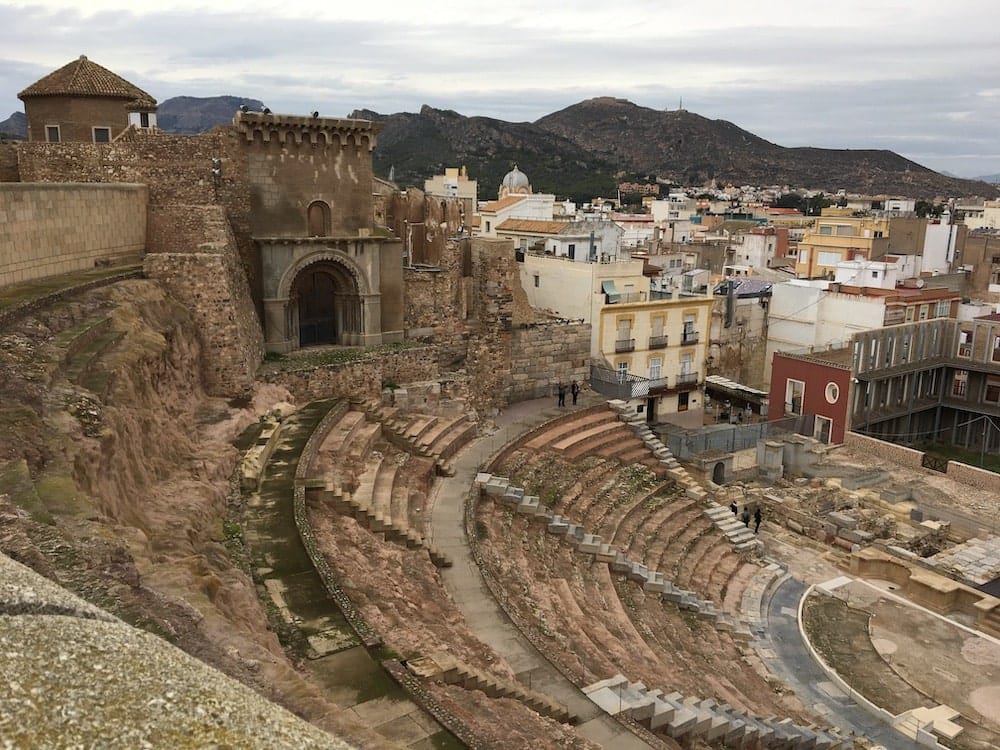
One of the pitfalls of semi un-planned travel is that you might arrive in a historic town to find you haven’t researched which days the museums are closed – darn! We spent the evening of arrival kicking ourselves. One of the delights of un-planned travel is when things happen like a small cruise ship arriving in port and the major sites being especially opened to accommodate them for the day – joy! We had difficulty finding the entrance to the Roman Theatre and were joined in the search by a sole tourist, a man of about 40 with fancy camera equipment. He told us he was from Germany but couldn’t decide which city he was from. He didn’t speak much English (which is weird for a German tourist) or any Spanish. Then he said he thought he’d heard me speak Russian. Once I’d got directions to the entrance and we’d all got in, we lost him as fast as we could. Later I read in an English-language newspaper that a German had been arrested for stealing artefacts from an archeological site. The dates didn’t match, but still.
We were at the entrance to the new Subterranean Archaeological Museum for its opening the next morning. It traces ships and port life in the city from the Phoenicians onwards. It also shows you how under water archeologists do their work. Fascinating, and this time we had the place to ourselves with no suspicious fellow visitors.
The landscape between Cartegena and Nerja in Andalucia was scrubby hills covered in terraces of orange trees. The soil is clay and dry and very poor. As we started driving along the mountains lining the coast, we spotted what we thought at first was the calm, shimmering sea. Then we thought it was salt pans. Then we realized they were in the valleys, but also perched on terraces and finally understood that they were thousands and thousands of plastic greenhouses.
If you buy tomatoes or in the Winter in Northern Europe, they have been grown hydroponically here. Since the 1980s, anyone with a plot of land has covered it with greenhouses, resulting in a huge economic boom in what was once the most impoverished area in Spain. Rather like the lobster fisherman used to in Nova Scotia, rich farmers now build huge villas next to their greenhouses, and drive fancy cars. To grow crops like this, you need sun, air, water and pesticides. Multiple chemical factories, water irrigation companies, and plastic suppliers lined the road. The downside? There isn’t much water in this area. Most of the rivers we crossed were dry. If it rains heavily, many of the greenhouses perched on hill terraces could wash away. Cancer rates and birth defects have sky-rocketed from the pesticides. The greenhouses reflect the sun and cover such a large area they are seen from space.
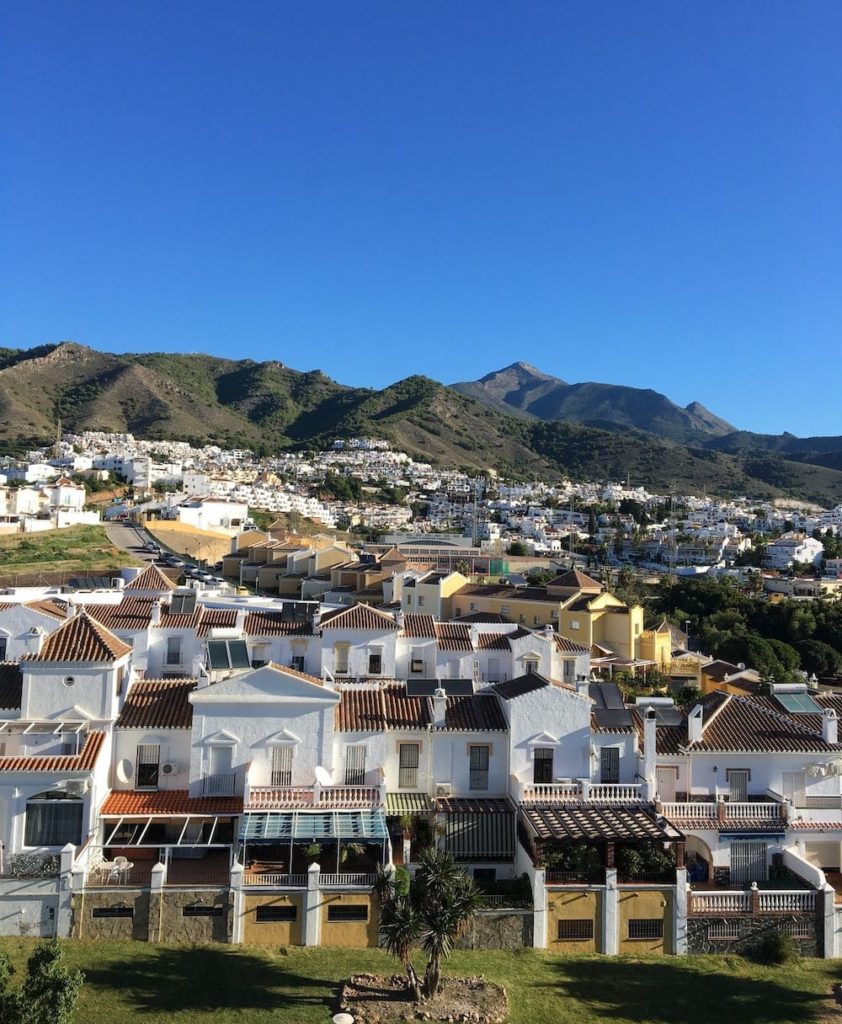
Nerja is a small seaside town about an hour East of Malaga. We stayed there on the assumption it would be less touristy than further along the Costa Del Sol, but in fact even off-season, a full 1/3 of the population were ex-pats, nearly all retired British and Scandinavian. For some reason this really depressed me, but perhaps I’m being a travel-snob. It was warm enough to walk on the beach or sit in an outside restaurant, but not warm enough for us to swim. There were only a couple of blocks of bars and restaurants which were open in the evening and looking for something a bit more stimulating to do, we bought tickets to an Argentinian Tango show in the small Cultural Centre. The audience was a sea of blonde and white hair – the vast majority were Scandinavians. The energetic group of dancers, singers and musicians from Buenos Aires demonstrated with gusto why the Tango is ‘the vertical expression of a horizontal desire’. Then we all left the theatre and MLH and I tangoed (vertically) down the street, but got no reaction from the dispersing audience. We decided Malaga might be livelier.
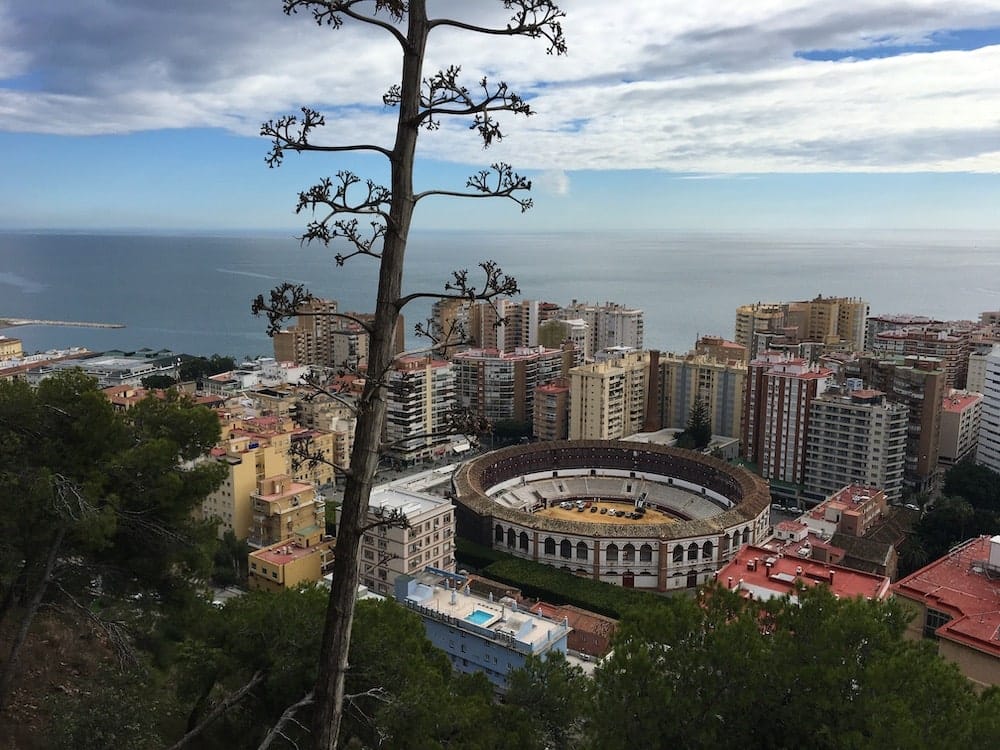
Malaga is probably atrocious in the Summer, but with a low level of tourists it is fine and has one of the best and certainly the prettiest covered food markets we saw in Spain. We climbed up to the Alcatraz, a Moorish citadel, for a super view over the coast. The narrow shopping lanes contain some gems, like the shoe store where the shoes are displayed in glass cabinets with a price and number, and you order what you want from an old-fashioned wooden counter. The assistant pulls the box from storage shelves.
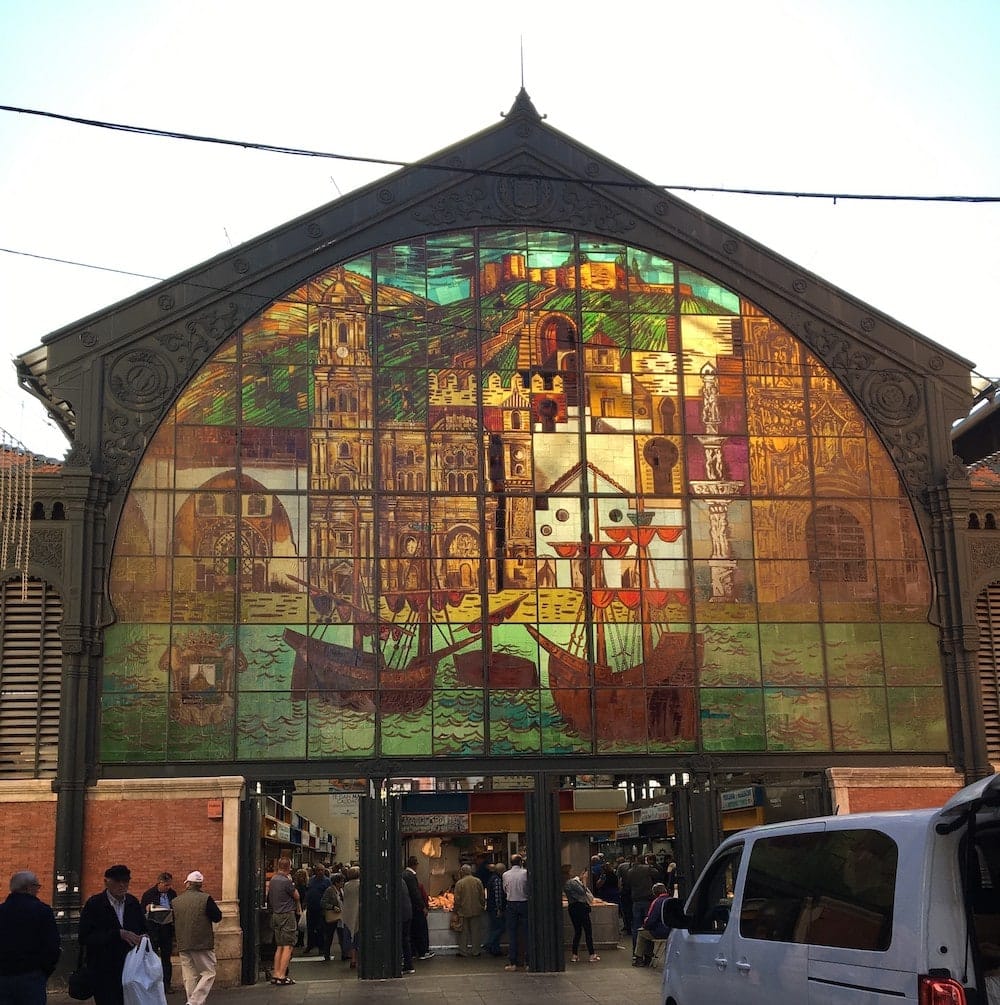

Close by the Nerja, however, were two interesting spots. The first is the Caves of Nerja, an immense and impressive natural cave system which was used by pre-historic peoples, and which contain important cave drawings. After oohing and aahing at the cathedral organ-like stalactites and stalagmites underground, we thought we would walk over the caves and up the hill on a marked path to see the view. We had just reached the top and were examining the map, when we became aware that 4 dogs were quietly blocking the way. They were all different types of mutts, from Golden Retriever size down to a terrier, non-aggressive and obviously used to people. It became clear that they were there to ensure we didn’t go any further. Indeed, they escorted us down to the perimeter of the cave complex and returned up the hill. Job done. We discovered later that ‘homeless’ people and new-age travellers live in natural caves in the area still.
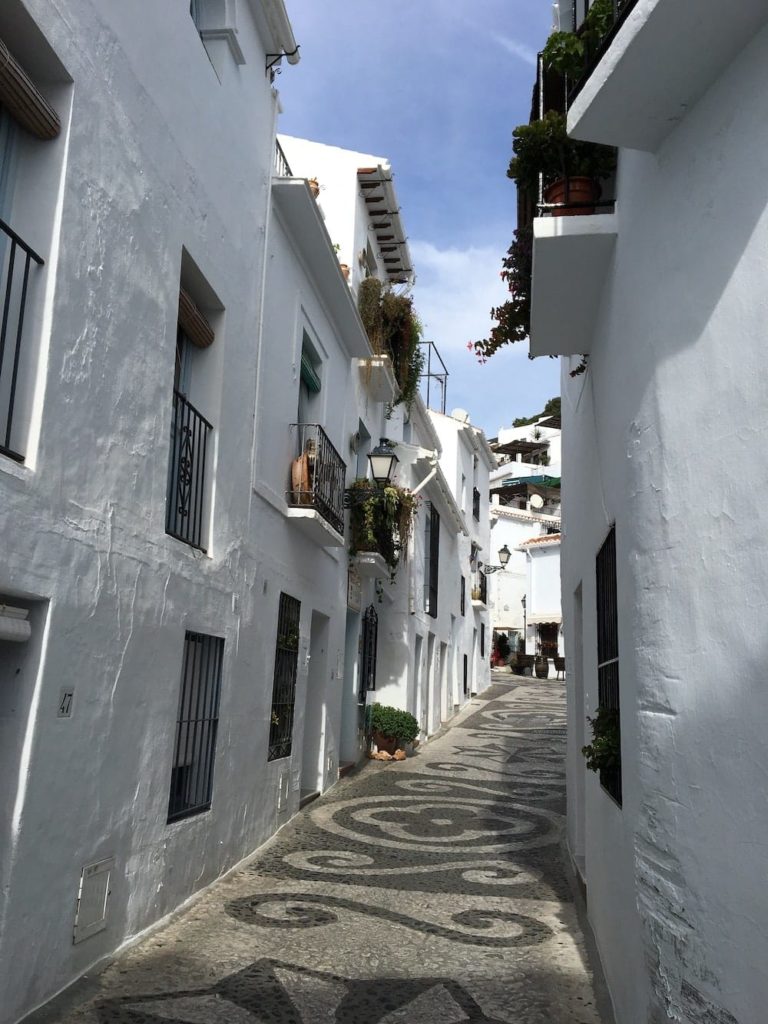
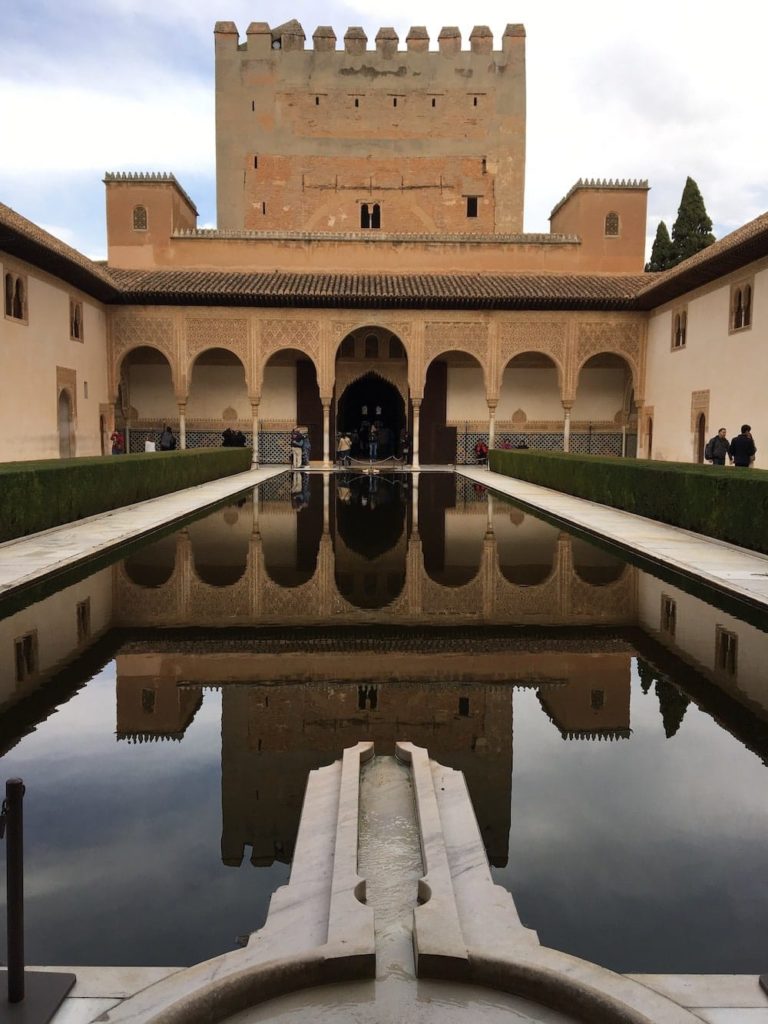
The second spot was the photogenic ‘white village’ of Frigiliana, spread like butter into the crevasses of an inland hill, and every building white-washed and decorated with bright blue tiles and pots of brightly coloured flowers. This was a Moorish village, where the main crop was sugar cane, and today they still produce molasses in the former ruler’s palace. The history of the village, including Moorish revolts against the Christians, is described in words and pictures on ceramic signs throughout the ancient settlement. Further inland still, we switch backed on the foothills of the Sierra Nevada Mountains, past green patch worked orchards of oranges, olives and mangoes, seeing the Mediterranean Sea luminous in the distance. There are ‘lost villages’ here; places where the people resisted Franco during the civil war and in retaliation Franco ordered the inhabitants expelled and the roofs removed from the houses. Some remain ruined and empty in the forest.
The next day we again turned inland towards the North, gently guided by Clare. My ears started popping as we climbed into the mountain passes towards Granada and the most amazing smorgasbord of culture and architecture yet.